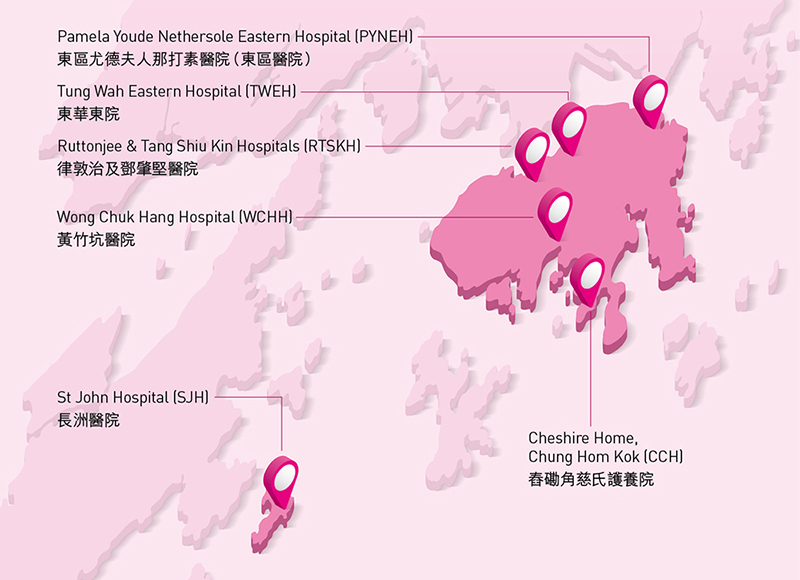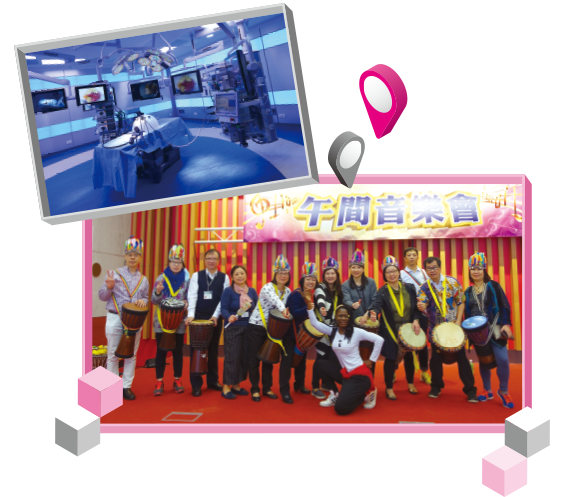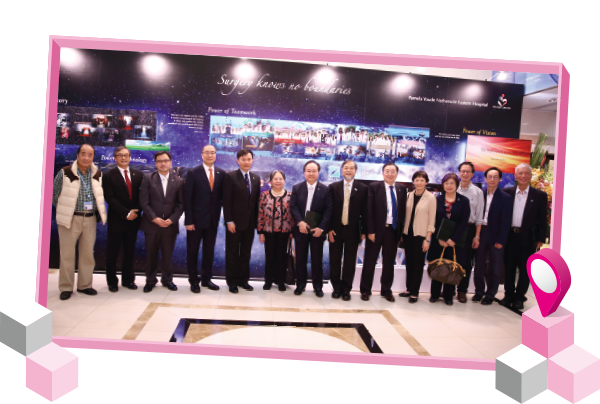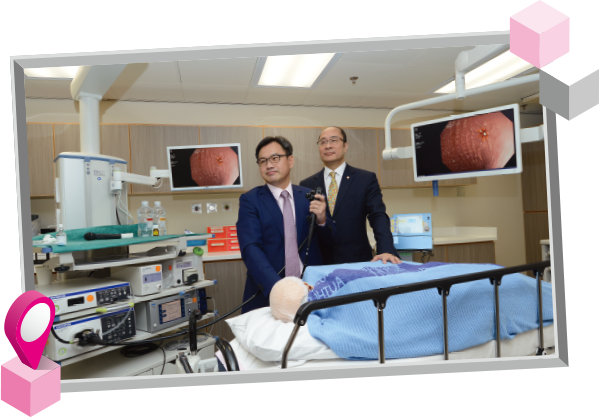Hong Kong East Cluster (HKEC)

| Number of general outpatient clinics | 12 |
| Throughput | |
| Number of beds | 3,092 |
| Patient discharges* | 185,727 |
| A&E attendances | 231,837 |
| Specialist outpatient attendances (clinical) | 807,962 |
| General outpatient attendances | 580,978 |
| Full-time equivalent staff | 7,959 |
* Total inpatient, day patient discharges and deaths
HKEC greatly values the commitment of staff in managing growing service demand and has implemented initiatives to allay manpower strain. HKEC recruited additional nurses, allied health staff and patient care assistants to relieve heavy workload. To sustain a competent workforce, HKEC continued enhancing professional and management training and development, including provision of clinical simulation training.
HKEC strengthened its services to alleviate pressure areas. PYNEH opened 10 additional orthopaedic day beds in April 2015 and one additional ICU bed in September 2015. Ruttonjee Hospital (RH) set up an Emergency Medicine Ward which provided 10 additional beds in August 2015 and designated two medical beds to enhance multi-disciplinary support for patients on mechanical ventilation starting from September 2015. SJH commenced the annual Metabolic Risk Assessment Module for patients with Diabetes Mellitus in 2015-16 with the aim to reduce diabetic complication rate and unnecessary admissions. TWEH installed one set of lower limb robotic assisted therapy system at Tseng Cheng Tseng Pei Integrated Community Rehabilitation Centre in January 2016 to enable early commencement of ambulation training for patients with severe disability.
The service capacity of life-threatening diseases was expanded. Extracorporeal Membrane Oxygenation (ECMO) service in PYNEH was enhanced since April 2015. Hospital haemodialysis was provided to two extra patients, home haemodialysis to six extra patients, and home automated peritoneal dialysis treatment to three extra patients with end-stage renal disease.
We strive to enhance services with pressing issues of waiting time and access block. A new floor was renovated with improved facilities and additional procedure rooms to accommodate the new Endoscopy Centre in PYNEH and seven additional sessions per week were added in 2015-16. Operating theatre service in PYNEH was expanded with five additional operating theatre sessions per week since August 2015. To improve accessibility to radiological imaging services, Positron Emission Tomography (PET) service was extended to 12 hours on weekdays with effect from October 2015.
HKEC adopts modern technology to ensure service quality and patient safety. Inpatient Medication Order Entry (IPMOE) System to enhance medication safety, and surgical instrument tracking system for improving sterilisation safety were implemented in RH. New technology of Matrix Assisted Laser Desorption Ionisation Time of Flight (MALDI-TOF) Mass Spectrometry, which could speed up microbiological identification for timely diagnosis and treatment, was installed in PYNEH. The management of cancer patients requiring targeted therapies was modernised through providing 190 additional molecular tests. Central coordinated refill services to wards in HKEC and phone enquiry system at specialist outpatient clinics in PYNEH were implemented to improve service efficiency. Site renovations for setting up the central sterilisation service unit and Hyperbaric Oxygen Therapy Centre in PYNEH were commenced in 2015-16.

HKEC is committed to building a green culture. Achievements in environmental management were well recognised with the Bronze Award under Public Services sector granted by Hong Kong Awards for Environmental Excellence 2015 organised by the Environmental Campaign Committee to PYNEH.
Technological breakthrough was achieved in pioneering 3D technology and other innovations in the 3D EndoLap Operating Room in PYNEH to deliver more efficient and safe endoscopic and laparoscopic surgeries in May 2015. Celebration of the 20th anniversary of the Minimal Access Surgery Training Centre in PYNEH in November 2015 marked an important milestone in HA’s history of pioneering minimal access surgery training.


